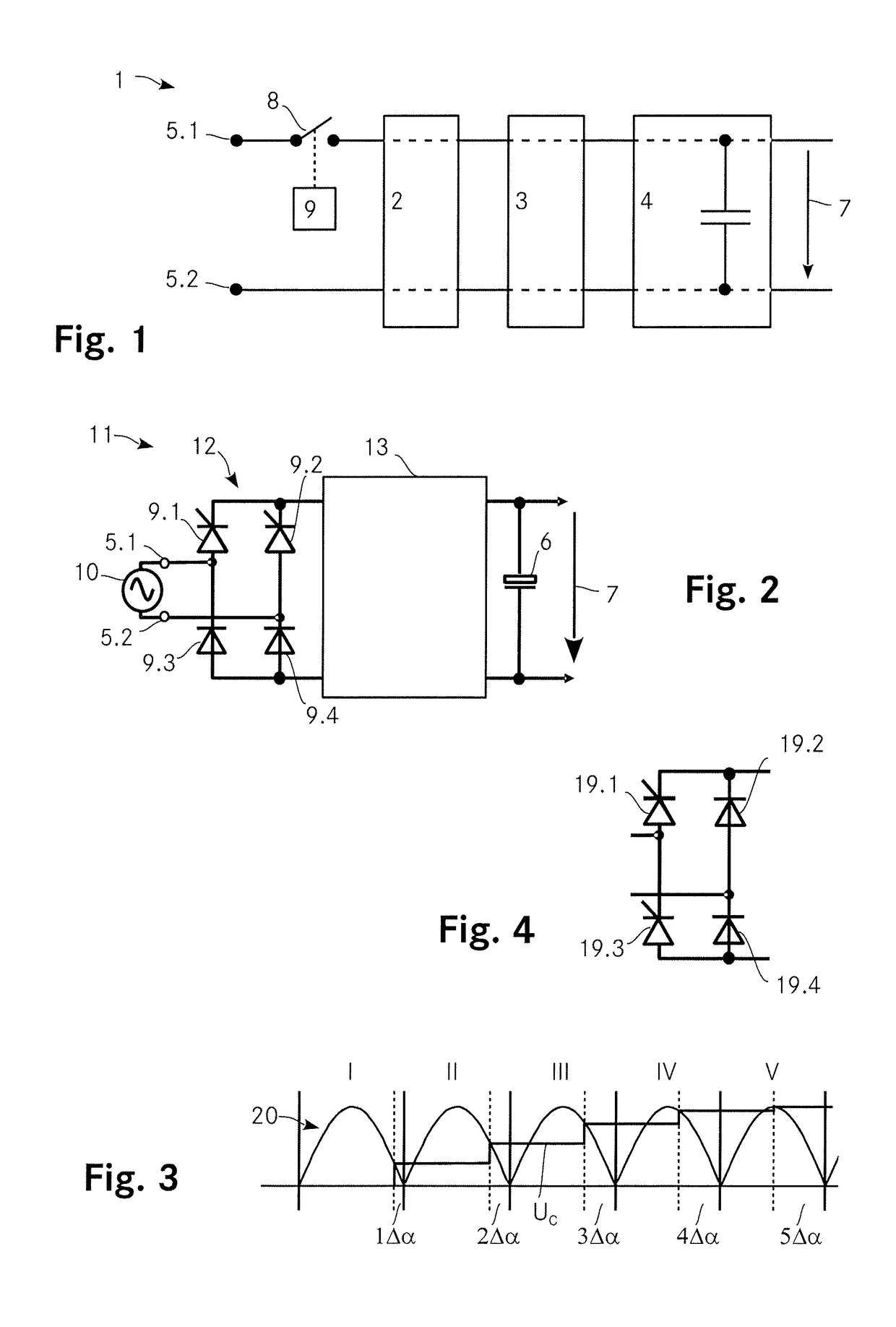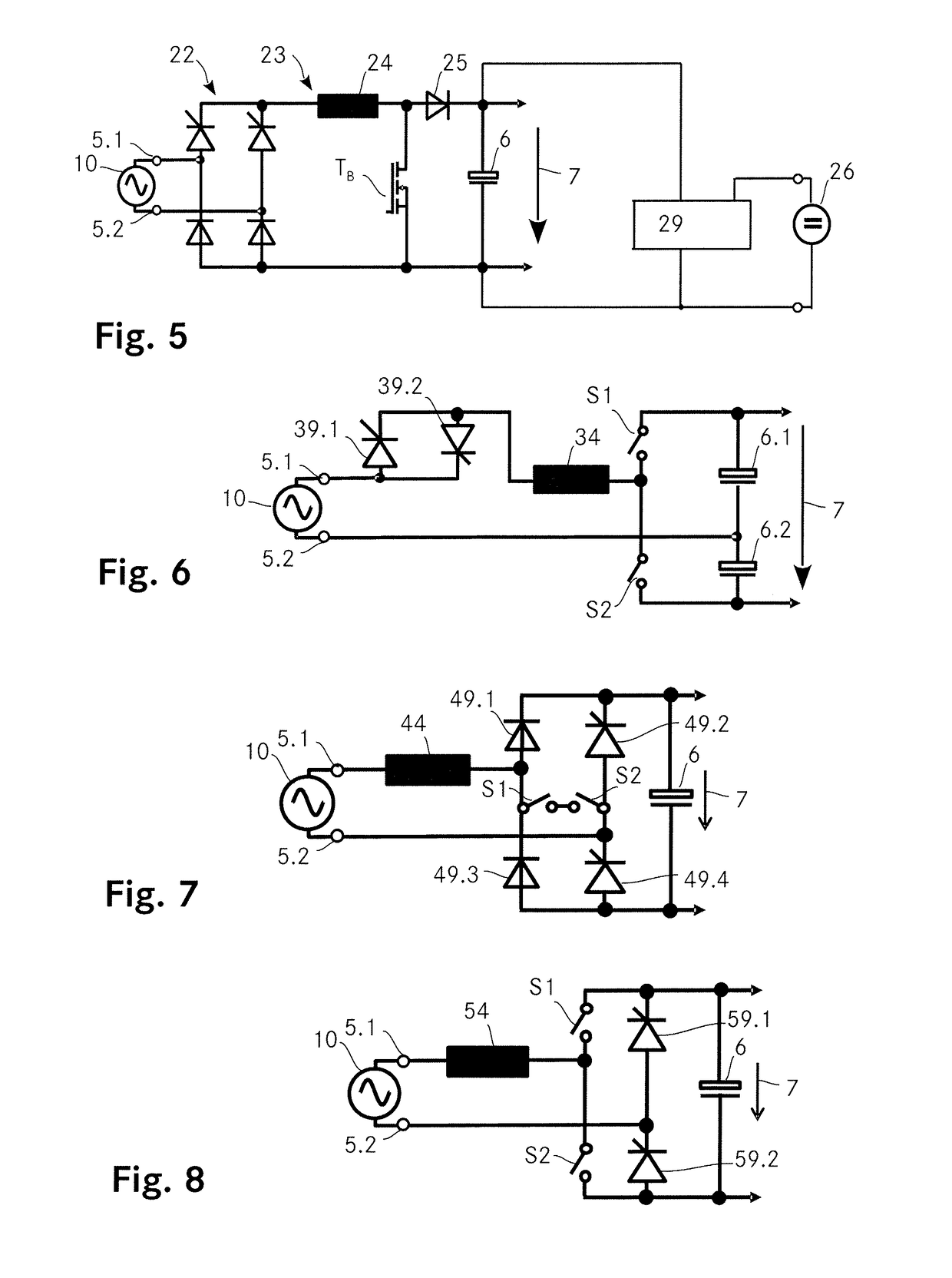Resistorless precharging
a resistor and precharging technology, applied in the direction of ac-dc conversion, electrical equipment, efficient power electronics conversion, etc., can solve the problems of increasing space requirements, increasing manufacturing costs, and needing resistors to limit the charge current, so as to reduce space requirements, reduce design constraints, and simplify the effect of design
- Summary
- Abstract
- Description
- Claims
- Application Information
AI Technical Summary
Benefits of technology
Problems solved by technology
Method used
Image
Examples
Embodiment Construction
[0059]FIG. 1 shows a schematic depiction of a converter arrangement 1 according to the invention. The converter arrangement 1 includes two input terminals 5.1, 5.2 for connecting an AC input voltage, an input stage 2, a converter stage 3 and an output stage 4 that includes an output capacitor 6. A DC output voltage 7 is provided across the output capacitor 6.
[0060]The converter arrangement 1 further includes a controllable switch 8 that is controlled by a control unit 9. By properly controlling the controllable switch 8 during startup, i. e. by switching it ON during each half period for a certain amount of time, the charge current flowing through the output capacitor 6 can be controlled to be rather small such that the inrush current is limited to a level that does not damage the converter arrangement 1.
[0061]FIG. 2 shows another embodiment of the invention. The converter arrangement 11 includes a full-bridge rectifierl2 connected to the input terminals 5.1, 5.2 where a voltage sou...
PUM
 Login to View More
Login to View More Abstract
Description
Claims
Application Information
 Login to View More
Login to View More - R&D
- Intellectual Property
- Life Sciences
- Materials
- Tech Scout
- Unparalleled Data Quality
- Higher Quality Content
- 60% Fewer Hallucinations
Browse by: Latest US Patents, China's latest patents, Technical Efficacy Thesaurus, Application Domain, Technology Topic, Popular Technical Reports.
© 2025 PatSnap. All rights reserved.Legal|Privacy policy|Modern Slavery Act Transparency Statement|Sitemap|About US| Contact US: help@patsnap.com



